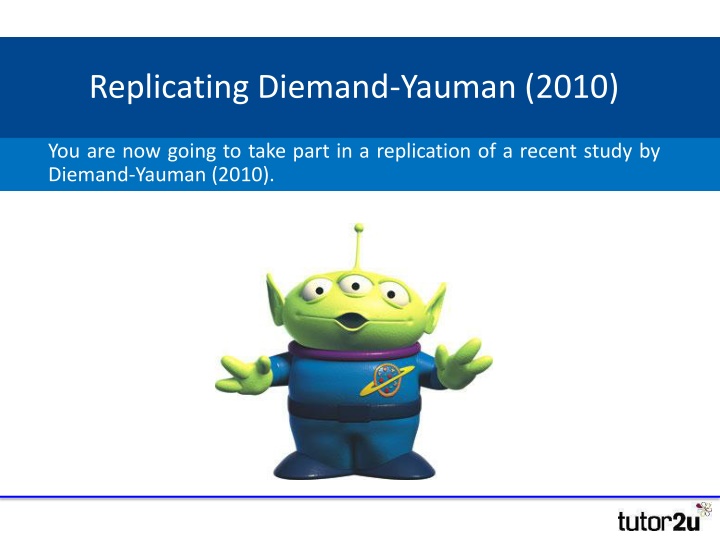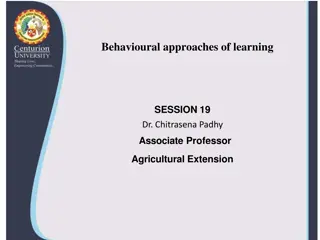
Unveiling Three Alien Species Characteristics from Planet Blangantz
Discover the unique characteristics and behaviors of three alien species from the planet Blangantz that have settled on Earth. Explore details about The Pangerish, The Norgletti, and The Derlenga in this intriguing study replication.
Download Presentation

Please find below an Image/Link to download the presentation.
The content on the website is provided AS IS for your information and personal use only. It may not be sold, licensed, or shared on other websites without obtaining consent from the author. If you encounter any issues during the download, it is possible that the publisher has removed the file from their server.
You are allowed to download the files provided on this website for personal or commercial use, subject to the condition that they are used lawfully. All files are the property of their respective owners.
The content on the website is provided AS IS for your information and personal use only. It may not be sold, licensed, or shared on other websites without obtaining consent from the author.
E N D
Presentation Transcript
Replicating Diemand-Yauman (2010) You are now going to take part in a replication of a recent study by Diemand-Yauman (2010).
Instructions Instructions: Scientists have recently confirmed the existence of three life forms from the planet Blangantz that have actually settled on planet earth. Although the scientists have not yet released actual pictures of these creatures, they have released lists of basic characteristics and behaviors of these creatures to the public. Task: In a moment, you will be given the list of characteristics. You have 90 seconds to learn the information from these lists for later follow-up questions.
Procedure You have 90 seconds to learn the information. 1:30 1:29 1:28 1:27 1:26 1:25 1:24 1:23 1:22 1:21 1:20 1:19 1:18 1:17 1:16 1:15 1:14 1:13 1:12 1:11 1:10 1:09 1:08 1:07 1:06 1:05 1:04 1:03 1:02 1:01 1:00 0:59 0:58 0:57 0:56 0:55 0:54 0:53 0:52 0:51 0:50 0:49 0:48 0:47 0:46 0:45 0:44 0:43 0:42 0:41 0:40 0:39 0:38 0:37 0:36 0:35 0:34 0:33 0:32 0:31 0:30 0:29 0:28 0:27 0:26 0:25 0:24 0:23 0:22 0:21 0:20 0:19 0:18 0:17 0:16 0:15 0:14 0:13 0:12 0:11 0:10 0:09 0:08 0:07 0:06 0:05 0:04 0:03 0:02 0:01 End 1:30 2:00 1:59 1:58 1:57 1:56 1:55 1:54 1:53 1:52 1:51 1:50 1:49 1:48 1:47 1:46 1:45 1:44 1:43 1:42 1:41 1:40 1:39 1:38 1:37 1:36 1:35 1:34 1:33 1:32 1:31 1:30 1:29 1:28 1:27 1:26 1:25 1:24 1:23 1:22 1:21 1:20 1:19 1:18 1:17 1:16 1:15 1:14 1:13 1:12 1:11 1:10 1:09 1:08 1:07 1:06 1:05 1:04 1:03 1:02 1:01 1:00 0:59 0:58 0:57 0:56 0:55 0:54 0:53 0:52 0:51 0:50 0:49 0:48 0:47 0:46 0:45 0:44 0:43 0:42 0:41 0:40 0:39 0:38 0:37 0:36 0:35 0:34 0:33 0:32 0:31 0:30 0:29 0:28 0:27 0:26 0:25 0:24 0:23 0:22 0:21 0:20 0:19 0:18 0:17 0:16 0:15 0:14 0:13 0:12 0:11 0:10 0:09 0:08 0:07 0:06 0:05 0:04 0:03 0:02 0:01 End 2:00 Now count backwards in 3s, from 42. Once you reach 0, wait for the next instruction. You now have two minutes to answer the questions relating to the different alien species, on the handout provided. Let s see how many you got right
Diemand-Yauman (2010) - Answers The Pangerish The Norgletti The Derlenga Ten feet tall Two feet tall Five feet tall Eats the bark of maple trees Eats green, leafy vegetables Eats flower petals and pollen Has a line of orange spikes down its back Has a bushy purple tail Has blue eyes Has a single yellow horn on its head Has black eyes Has smooth, soft skin Has brown eyes Has thick, tough skin Females lay their young on piles of soil at birth Has scaly skin Females usually travel in groups Females communicate with a pleasant chirping noise Males collect food for their young Males tend to wander alone each day for hours Males communicate with a deep, trumpet noise
Diemand-Yauman (2010) - Results Task: Once we have collected the data, calculate the mean % and range, for both conditions. Condition 1 Condition 2 Results Results Mean Range Mean Range Diemand-Yauman found the following: Condition 1 72.8% Condition 2 86.5% Task: Once you have collected and analysed the data, as a group, consider the four questions at the bottom of page 1.
Conclusion Once you have seen the stimuli given to both conditions, consider the following questions: 1. What conclusions can we draw from the data? 2. Do the results of our replication support Diemand-Yauman s (2010) results? 3. Suggest a theory that could explain the data, why is it that one condition performed better than the other? 4. Were there any problems with our replication (for example, uncontrolled EVs)?






















